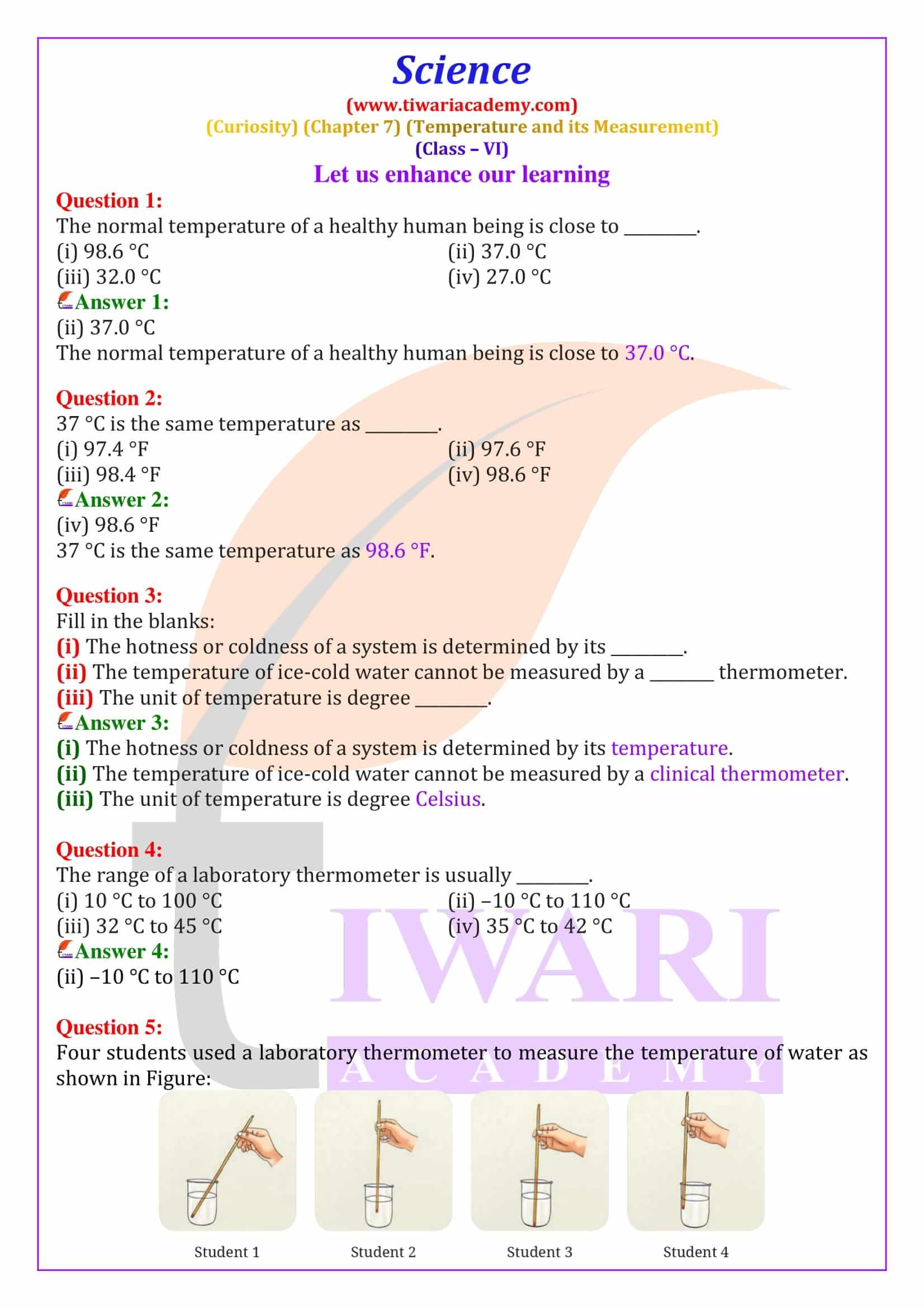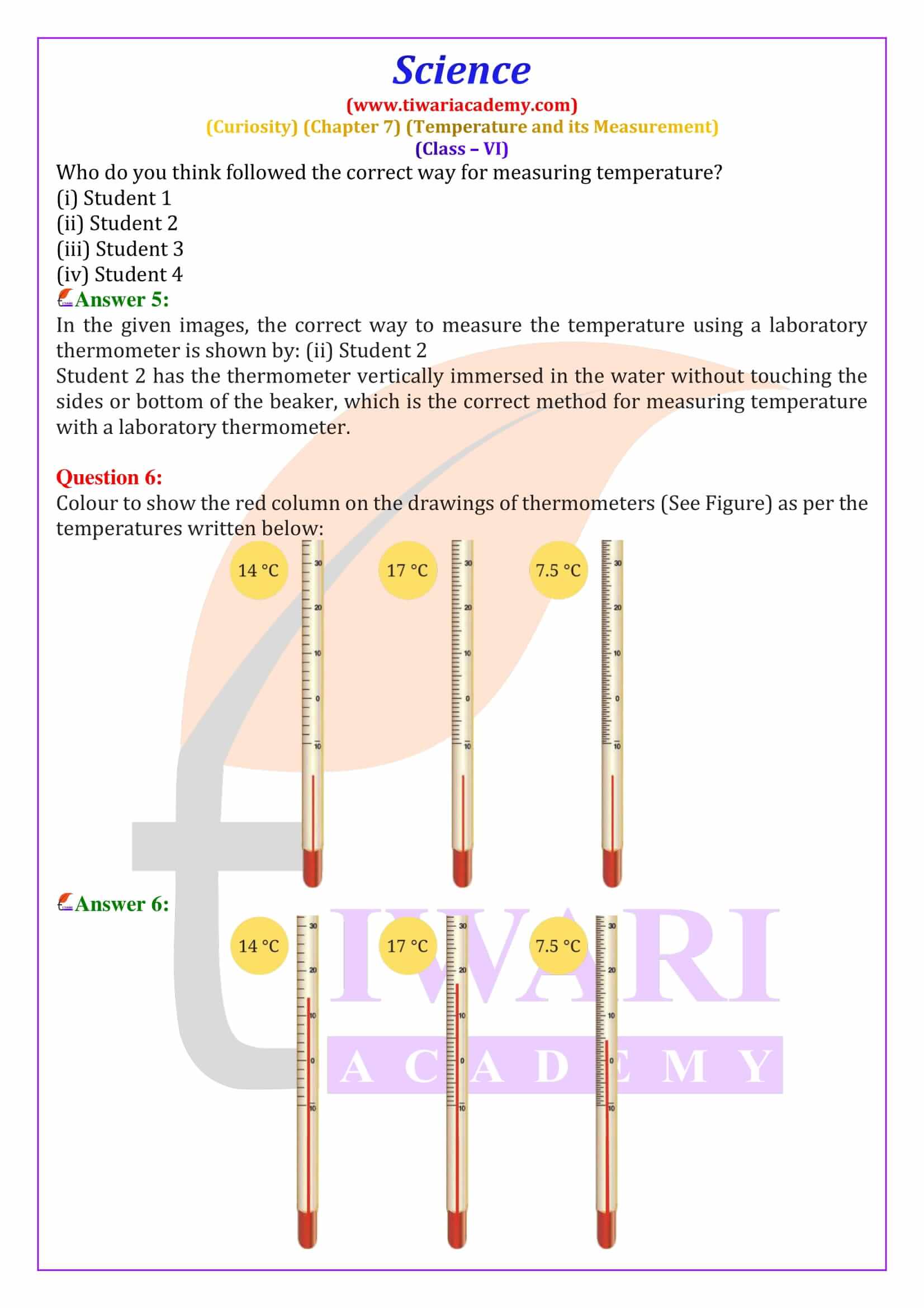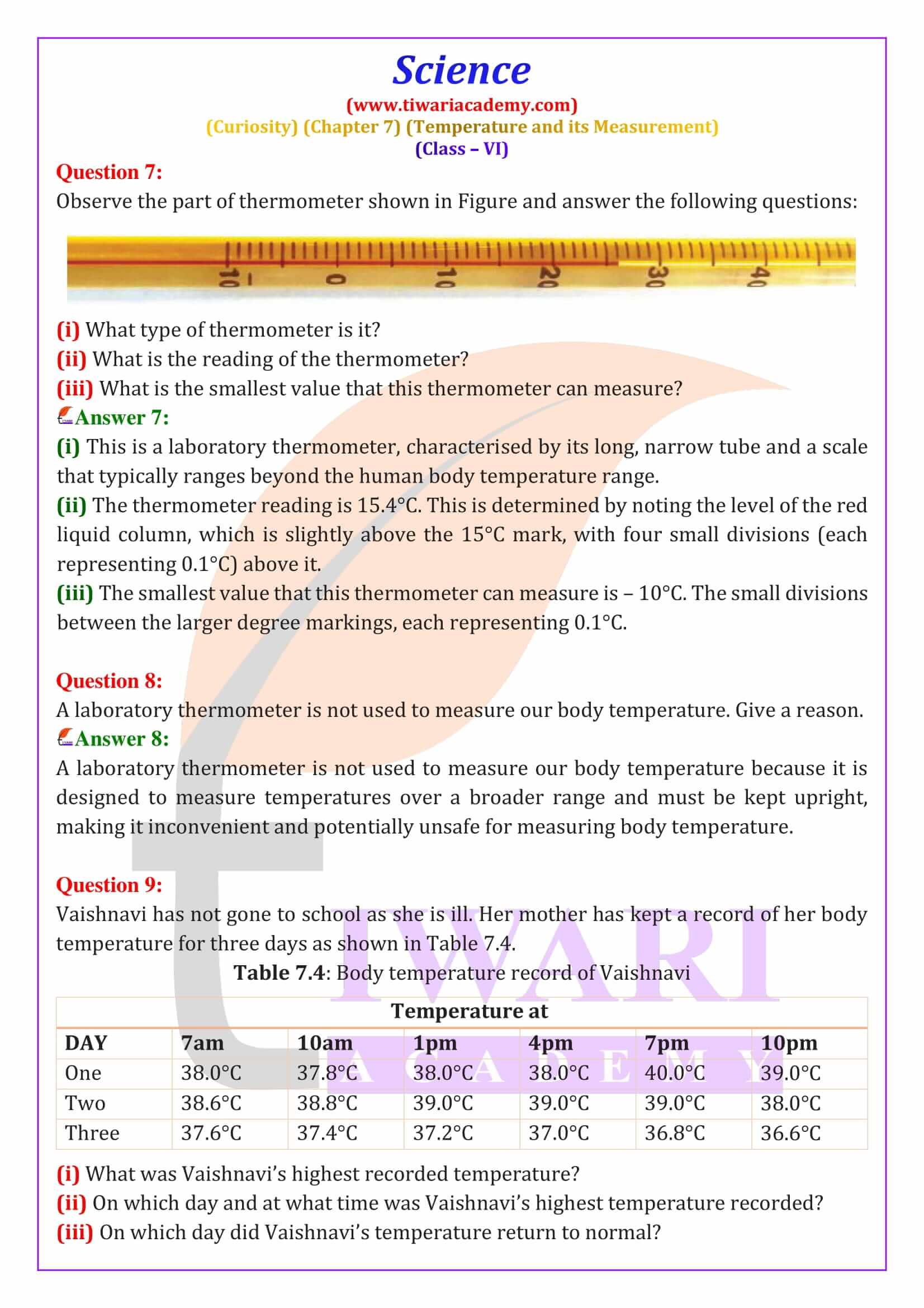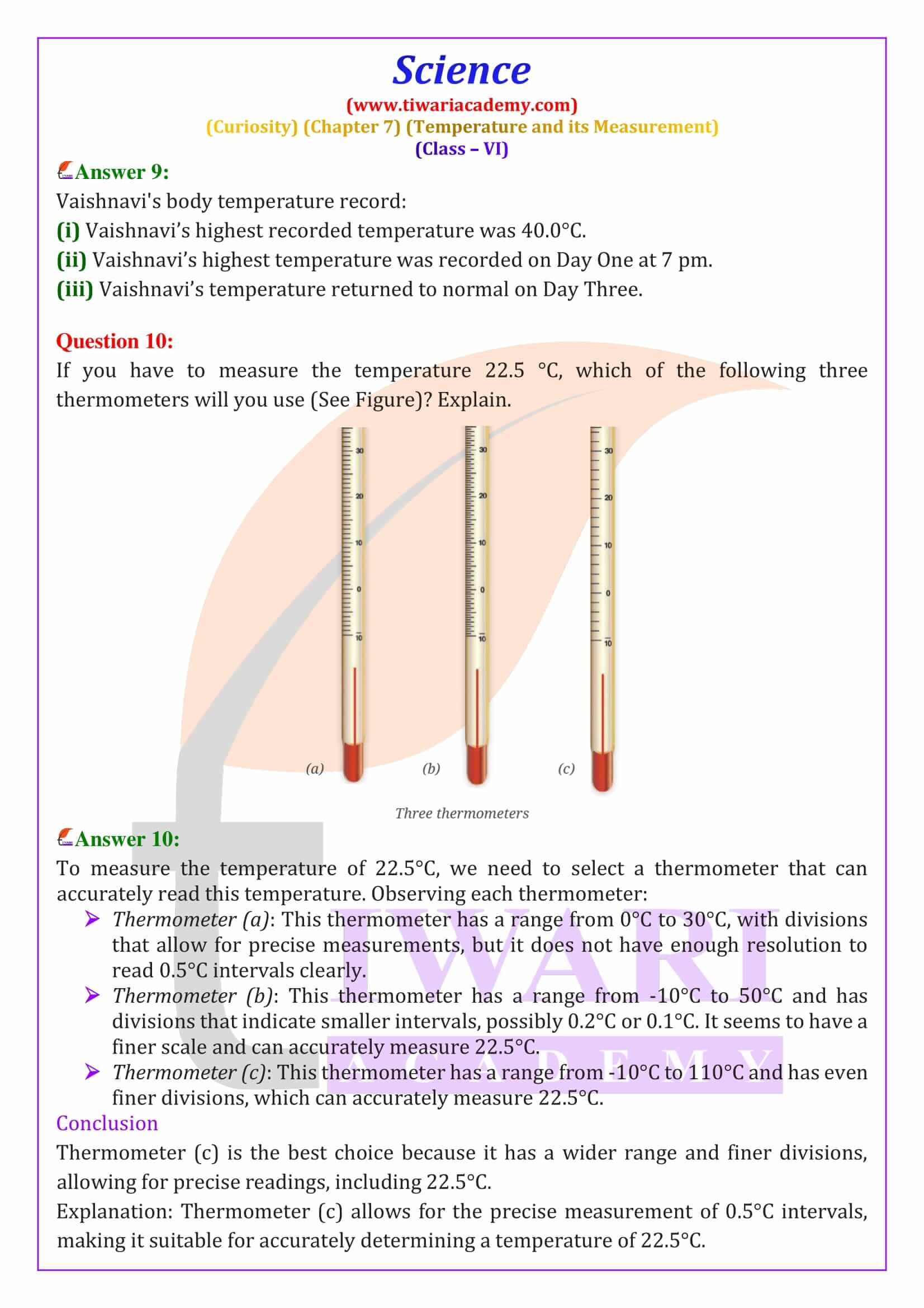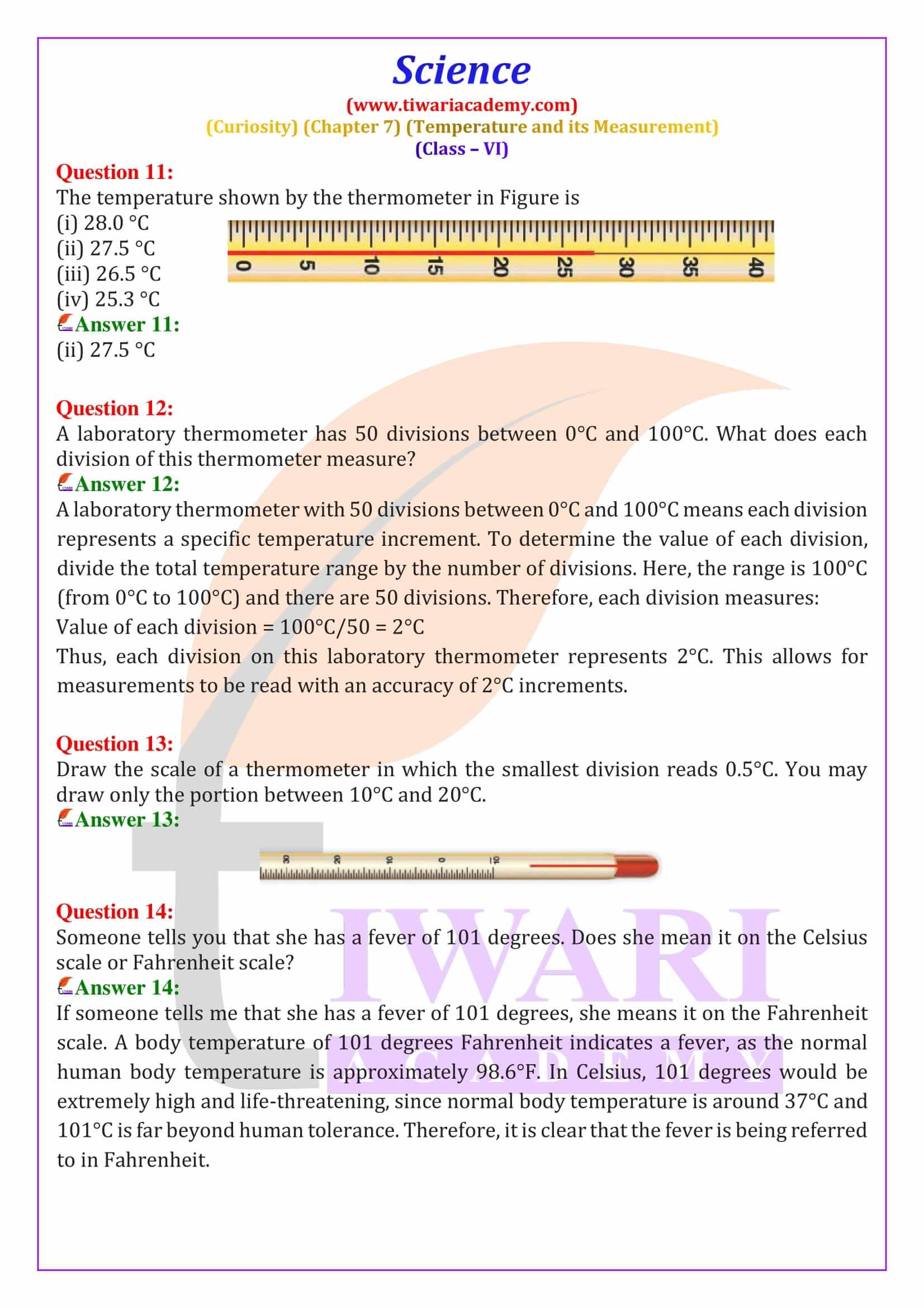NCERT Solutions for Class 6 Science Curiosity Chapter 7 Temperature and its Measurement in Hindi and English Medium revised and updated for session 2025-26. The question answers are based on new addition textbook released for NEP 2020.
Class 6 Science Curiosity Chapter 7 Temperature and its Measurement
Temperature and Measurement
Temperature and its measurement are crucial in understanding how hot or cold an object is. The chapter 7 starts with a story of Lambok and his sister Phiban, where they use a thermometer to check if Lambok has a fever. This sets the stage for exploring how we perceive temperature through touch and the need for more reliable methods like thermometers. Through various activities, students learn that touch can be deceptive in judging temperature differences, highlighting the importance of accurate measurement tools.
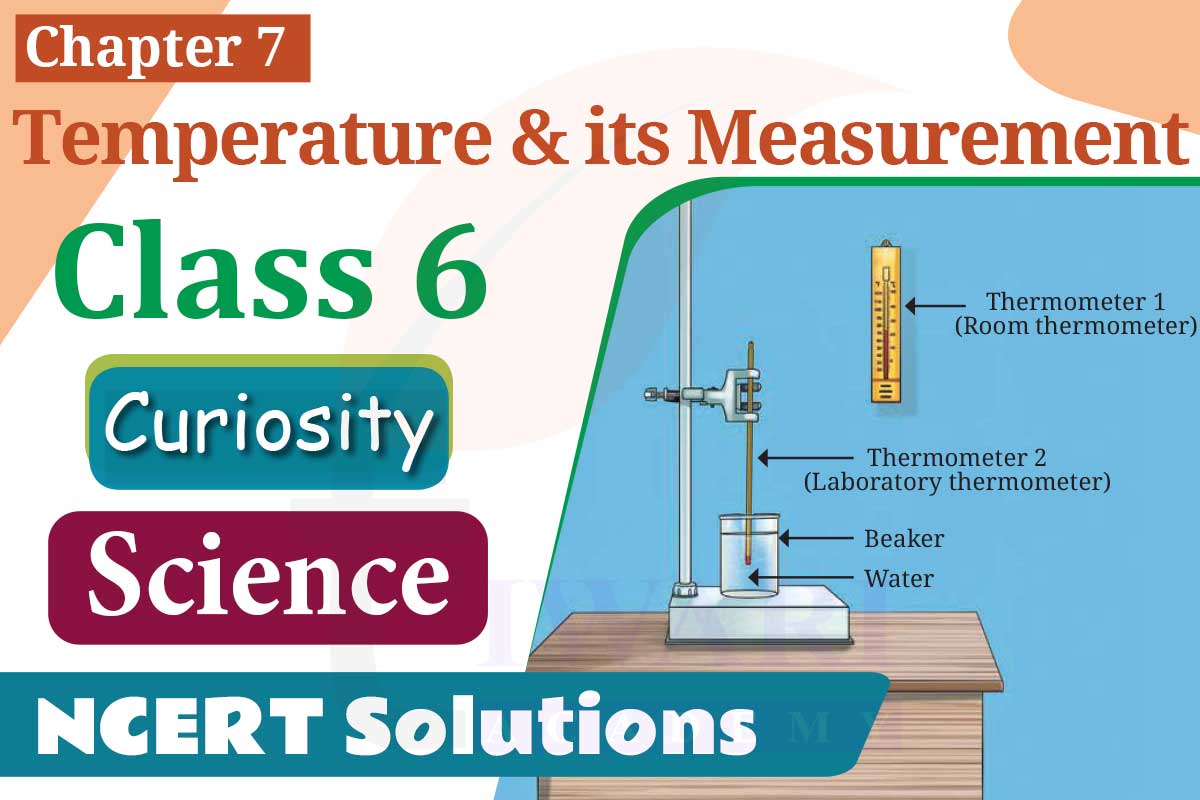
Understanding Hotness and Coldness
The chapter 7 delves into the concepts of hot and cold, emphasizing that our sense of touch is not always reliable. For example, water from different sources like a tap and an earthen pot may feel different to the touch. An activity with three containers of water at different temperatures demonstrates how our perception can be inconsistent. This leads to the understanding that temperature needs to be measured with instruments for accuracy, not just felt by touch.
Temperature and Thermometers
Temperature is a measure of how hot or cold a body is, and it is measured using thermometers. There are different types of thermometers, such as clinical and laboratory thermometers. Clinical thermometers are used to measure human body temperature, whereas laboratory thermometers are used for various other purposes. The chapter explains the difference between these thermometers and introduces the Celsius scale as a common unit of measurement, denoted by °C.
Measuring Temperature with Clinical Thermometers
Clinical thermometers, including digital versions, are designed for measuring body temperature. The chapter 7 describes how to use these thermometers properly, including washing the tip before and after use, and explains the normal human body temperature as 37.0°C. It also introduces non-contact thermometers used during the COVID-19 pandemic. The section stresses the importance of accuracy and hygiene in measuring body temperature, providing step-by-step instructions for students to practice.
Laboratory Thermometers and their Usage
Laboratory thermometers differ from clinical thermometers in their range and usage. They can measure a wider range of temperatures, typically from -10°C to 110°C, and use liquids like alcohol or mercury. The chapter 7 of 6th science, includes activities to help students understand how to read these thermometers accurately. It emphasizes the need for careful handling and proper reading techniques to ensure safety and precision in experiments.
Application and Analysis of Temperature Data
Class 6 Science chapter 7 concludes with practical applications and activities involving temperature measurement and analysis. Students are encouraged to record daily maximum and minimum air temperatures over ten days to observe patterns. They learn about the importance of air temperature in weather reports and how it affects our daily lives. The chapter 7 also introduces the concept of different temperature scales, including Fahrenheit and Kelvin, and their scientific significance. Students are also encouraged to explore historical and scientific facts related to temperature measurement.
